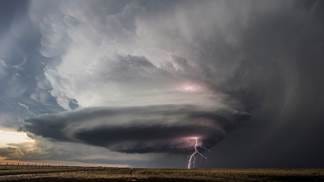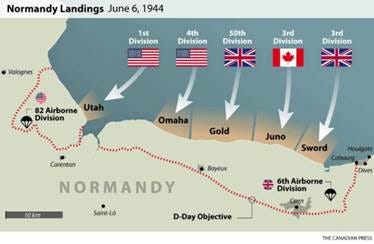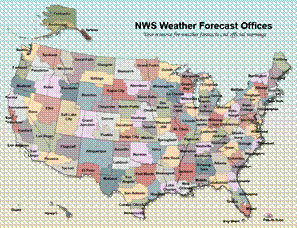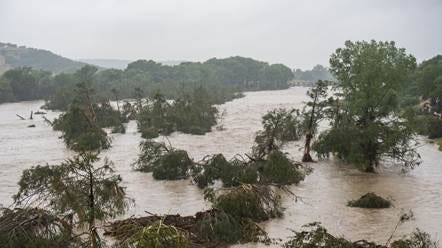Week of July 14, 2025

It’s the season: hurricanes, tornados, floods, wildfires, drought, microbursts, intense thunderstorms—you name it. It feels like the wild, wild west of weather events now. These events are no longer rare. We use terms like “once in 500 years” for flood events that happen now almost annually. Climate change is happening and better preparation will save lives.
Almost every day, the news is filled with another natural disaster. In this age of rapid climate change, warming oceans, melting glaciers and retreating permafrost, we will be experiencing more and more of these weather events. This year, the number of named storms is supposed to be greater than last year. And each year, going forward, the number of natural disasters causing destruction is expected to increase.
In the last fifty years our meteorological science has made fantastic strides in forecasting, updating and issuing warnings to those who will be impacted. All of this information is from our National Weather Service (NWS), paid for by our combined tax dollars for the specific purpose of reducing the loss of lives and property damage.
The Development of the National Weather Service.
The importance of knowing more about weather has its roots in the origins of this country.
“Weather always has been important to the citizenry of this country, and this was especially true during the 17th and 18th centuries. Weather also was important to many of the Founding Fathers. Colonial leaders who formed the path to independence of our country also were avid weather observers. Thomas Jefferson purchased a thermometer from a local Philadelphia merchant while in town for the adoption of the Declaration of Independence. He also purchased a barometer – one of the only ones in America at the time – a few days later from the same merchant. Incidentally, he noted that the high temperature in Philadelphia, Pa., on July 4, 1776, was 76 degrees.“ (History of NWS) If Jefferson was in Philadelphia on July 4, 2025, he would be experiencing a much warmer city as this year, the temperature in Philadelphia was in the 90s, another sign of a warming planet.
With the introduction of the telegraph, which made long-distance communication easier, the federal government recognized the importance of national weather observations. In 1870, a Joint Congressional Resolution required the Secretary of War "to provide for taking meteorological observations at the military stations in the interior of the continent, and at other points in the States and Territories. . . and for giving notice on the northern lakes and on the seacoast, by magnetic telegraph and marine signals, of the approach and force of storms.”
Congress passed the resolution and on February 9, 1870, President Ulysses S. Grant signed it into law. A national weather service had been born within the U.S. Army Signal Service’s Division of Telegrams and Reports for the Benefit of Commerce that would affect the daily lives of most of the citizens of the United States through its forecasts and warnings for years to come.
Weather forecasting helps America save lives and win wars.
Weather forecasting played a crucial role in the success of D-Day in 1944. The decision to invade Normandy on June 6 was based on weather forecasts, which indicated the correct combination of tides and winds. General Eisenhower recognized that the forecasts were based on the best practices of meteorology at that time. If the forecast had been unfavorable for the invasion, it wouldn’t have happened.
The importance of meteorology has been acknowledged by every American president. Support for the National Weather Service has been a bipartisan effort for centuries. Presidents representing each party have helped advance the work of the NWS, providing budgetary support for better research in understanding weather, improving communication with citizenry, creating weather substations in every state and territory, and focusing on how to save lives and property.
· In 1970, President Nixon established the National Oceanic and Atmospheric Administration, which now is the home of the National Weather Service. Both are part of the U. S. Department of Commerce.
· In 1993, under President George H. Bush, the NWS began a large-scale modernization plan to increase its capabilities to better forecast and communicate. Known as the Advanced Weather Interactive Processing System (AWIPS), a high-tech, interactive weather computer and communications system has been installed in 152 National Oceanic and Atmospheric Administration sites across the country.
· In 2000, again during the administration of President George W. Bush, the NWS instituted a national program called StormReady to help communities better prepare for tornadoes and other severe weather.
· Under President Joe Biden’s leadership, the Bipartisan Infrastructure Law had money specifically allocated to continue improvements for research and forecasting.
Knowledge of weather events saves lives.
The NWS continues to be one of the best appreciated federal agencies, ranking in the top 15 percent of federal agencies for consumer satisfaction.
Its essential mission is one of public safety and it continues to deliver on its foremost goal. With the modernization program of the 1990s and the improvements since the early 2000s in forecasting, the NWS is making America safer by saving more lives and protecting livelihoods as communities across the country become increasingly vulnerable to severe events such as tornado outbreaks, intense heat waves, flooding, active hurricane seasons and solar storms that threaten electrical and communication systems.
The NWS is a strong partner with local and state government.
As important as the ongoing research in weather modeling and predicting is the ability of any organization to disseminate the knowledge in collaboration with local and state entities. In addition to its StormReady work, the NWS has created communication systems that work in tandem within substations across the country. The information they provide is focused on helping people make better decisions in the face of incipient severe weather situations.
Key to this partnership is reliable communication systems. Within each NWS are people charged with knowing who to contact at local levels to provide alarms and alerts so that people can safely remove themselves from harm’s way.
These relationships don’t happen in an instant. They are cultivated by experienced staff who keep their contact lists up-to-date and know the local terrain.
Before the Texas flood, a critical missing link.
I imagine that by now, almost everyone in the country has seen information about the deadly flooding in central Texas. The Guadalupe River, a flood-prone area, exceeded its banks within minutes as a result of unrelentingly heavy rain. Although the local weather station promptly issued flood alerts at appropriate times during the worst of the event, a thorough communication process was missing.
In the days that followed the flooding, “it became clear that the Weather Service employee whose job it was to make sure those warnings got traction – Paul Yura, the long-serving meteorologist in charge of ‘warning coordination’ – had recently taken an unplanned early retirement amid cuts pushed by the so-called Department of Government Efficiency (DOGE). He was not replaced.“ (NY Times July 9, 2025)
Like many employees pushed out by indiscriminate cuts to almost all federal agencies under this administration, many of the people forced out have the most experience and knowledge. Paul Yura had over 32 years of experience, spending more than half of his career at the NWS Austin/San Antonio office and developing a better understanding of the local weather patterns, while knowing which governmental organizations to contact to ensure the dissemination of timely warnings to the community.
Our government should be invested in saving our lives.
Preparation is the key to survival. We have long provided the tools and resources to help us prepare for the worst situations. These resources matter to everyone in every community in this nation. Knowing what weather is about to unfold allows us to prepare. In the frenzy to cut federal jobs, the NWS lost over 500 employees, representing some of the most experienced meteorologists in the agency. The foolishness of getting rid of your most capable and knowledgeable staff cannot be overstated. While the agency is now attempting to rehire some former employees, it’s slow going and may be years before the NWS is able to again meet our nation’s needs.
As a country and as taxpayers, we have helped build a robust, up-to-date national weather service that provides life-saving information to all of us, using our personal technology and public radio broadcasting infrastructure, at no additional cost. That is part of our social contract with each other. But this administration, following the Project 2025 guidelines, is working to '“commercialize” weather forecasting. If that happens, we will need to subscribe to it in order to get alerts and necessary information. How many of us will be able to afford yet another subscription for this service?
We will be bearing the consequences of this harm for decades.
Like so many of the consequences of these disasters, they are difficult to absorb or reconcile. How many lives might have been saved if the flood water alarms reached the people who were in harm’s way? There would still be great devastation to the area, but for the most part, buildings can be replaced. People cannot. As of this writing, there are more than 120 people who have died and there are still 173 people missing. What are our lives worth?
A recent analysis of the NWS has found that in more than a third of NWS offices located in areas that are particularly vulnerable and hardest hit by flash flooding, one or more of three senior leadership roles, including chief meteorologist, are unfilled. These vacancies are the result of the sledgehammer approach taken by the Trump administration. (Vacancies go unfilled)
For the last 250 years, we have placed a strong value on building a government that works on behalf of everyone. Now we are experiencing the realization that we don’t count. If we matter, then our federal government, along with our state and local governments, would be investing in the advances of science that save lives.
Question: Does your community have the ability to warn you about severe weather? How much is this worth to you?






“Sledgehammer” is the perfect word!
I agree with you about what a government should be for. I like the idea of taking a 10,000 foot view up and in this case, probably even higher. The more lives we can save in the more warning we can give and the more chance of avoiding damage and loss of life will actually not only morally save people, but will cost the government less money in the long run.
I dare say that the unspoken to me is that continuing with identification of weather and climate actually is dealing with climate change and global warming, which are too frightening for the government to want us to discuss anymore. The reality is that even military bases have to confront this or else we are going to lose any battle of any country taking advantage of us.